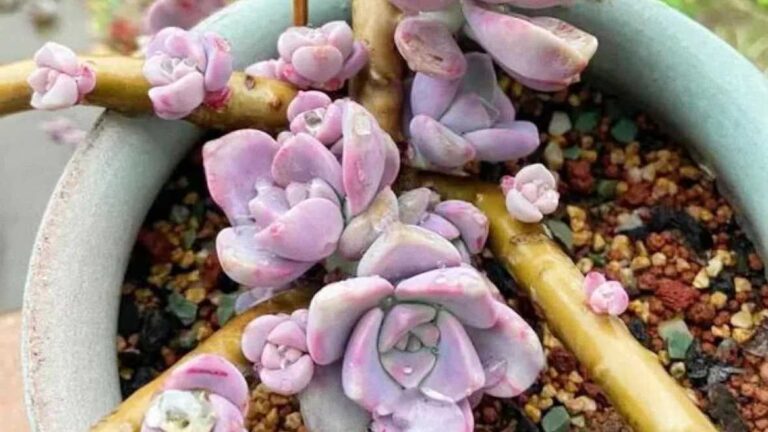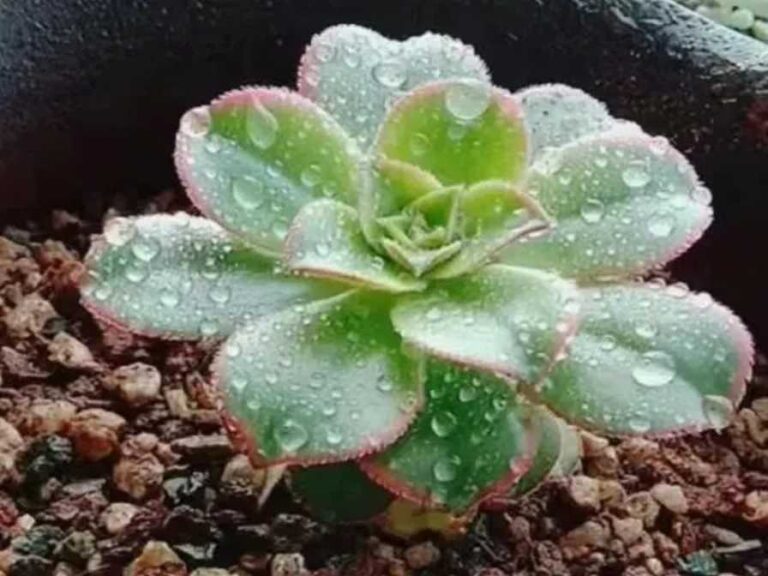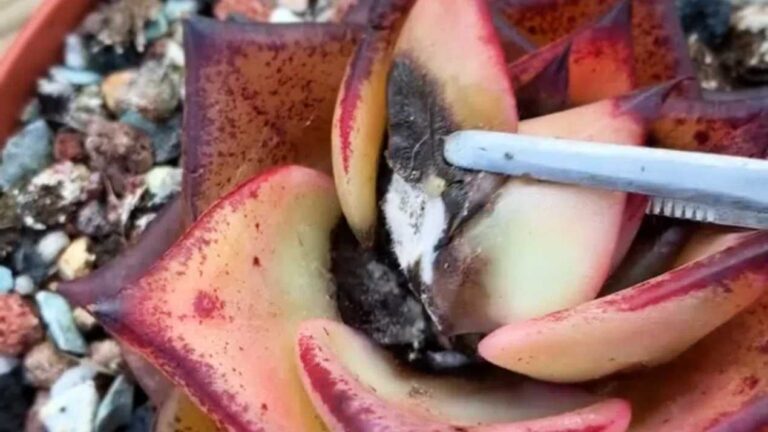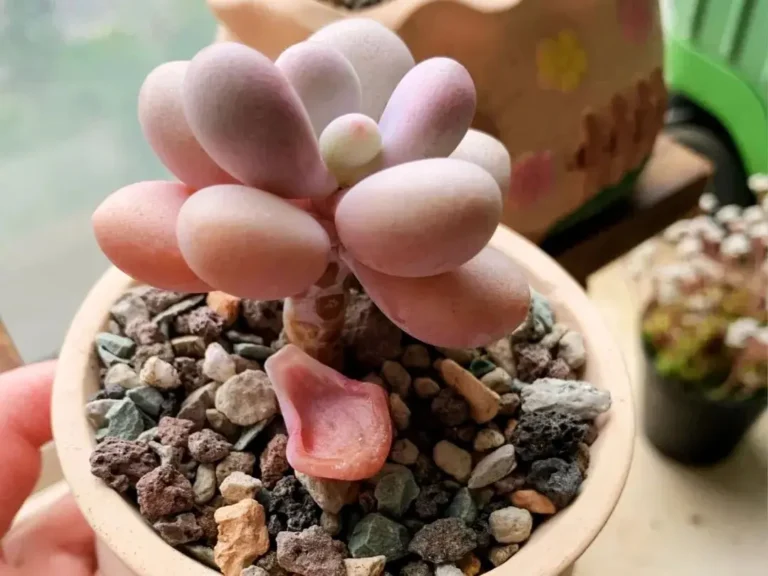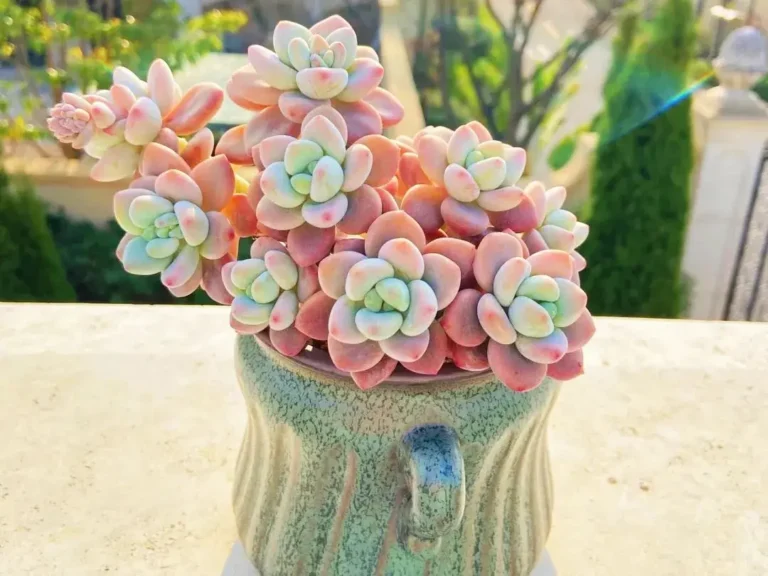Your succulent is talking to you in the “air root language”! Reading these distress signals can save your plant’s life!
As a professional succulent grower, I’ve found that many newbies overlook the most intuitive signals of distress from plants – aerial root growth. These white roots emerging from the stem are actually a unique way for succulents to communicate. Today I’m going to explain 4 common air root alerts in detail and teach you the proper way to respond.

Survival instincts during the new growth period
When a newly planted succulent starts to sprout air roots, please don’t worry so quickly. This is the natural reaction of plants to adapt to the environment. Just like a baby needs support for toddling, these air roots help the plant:
√ Enhance its ability to grip the soil
√ Quickly establish a moisture sensing system
√ form a double absorption network
Treatment advice: keep the soil slightly damp and avoid direct sunlight. Usually after 2-3 weeks, these aerial roots will fall off naturally as the main root develops.
rought Crisis Alert
I have found that 70% of aerial root problems stem from improper watering. When stems suddenly develop dense air roots along with the following symptoms:
✓ Crumpled bottom leaves
✓ Complete drying of the soil
✓ Reddened leaf tips
This indicates that your watering frequency needs to be adjusted. Here’s a practical tip: Insert a bamboo skewer into the soil and water immediately if it is completely dry, but remember to make sure the bottom of the pot is well drained.
Dangerous Signs of Overwatering
Overwatering triggers an even more dangerous crisis! When aerial roots are accompanied by these symptoms:
✓ Transparency of the leaf blades
✓ Stem softening
✓ Prolonged wetness of the soil
Please take 3 steps of first aid immediately:
De-pot and inspect the root system
Cut off blackened and rotted roots
Soak with carbendazim and change to new soil
We recommend switching to granular soil (70% or more), which can effectively prevent waterlogging problems.
Root necrosis emergency
When the primary root system fails, the aerial roots will grow abnormally lush. This is usually accompanied by:
✓ Overall leaning of the plant
✓ Complete stagnation of growth
✓ Discoloration at the base of the stem
First Aid Option:
Thoroughly remove the necrotic tissue
Air dry the roots for 3-5 days
Use rooting powder to promote new roots
Professional Care Tips
Aerial root management: When the problem is solved, use sterilized scissors to prune the stems, and apply cinnamon powder to the cuts to prevent bacteria
Preventive measures: Check the soil density with a bamboo stick every month to ensure the breathing space of the roots.
Special circumstances: the old pile of succulent roots may be normal lignification, need to be combined with the overall state of judgment!
Succulent care must be taught: 5 years of experience summarized smothered root rot root prevention guide (with solutions)
As a succulent 5 years of senior players, I found that 90% of the succulent deaths stem from the same invisible killer – smothered root rot root! Today I want to share this set of [smothering root rot prevention system], it is through countless failures lessons summarized valuable experience. Follow my steps to operate, to ensure that your succulent from now on away from root problems!
Understand the key terms in seconds
The two concepts most easily confused by newbies:
√ Stuffy root = root system lack of oxygen (like a person being covered with his mouth and nose)
√ Rotten root = infection by germs (similar to a wound that is inflamed and pus-filled)
Typical Case Comparison:
Last week, my Raul’s suddenly had transparent leaves, and the inspection found that it was a stuffy root caused by the pots being waterlogged after watering. And another bearberry dropped leaves seriously, dug out and saw that the root system has blackened and rotted, which is typical of rotten roots.
Deadly Culprits Fully Explained
Through 3 years of tracking records, I’ve compiled four major culprits that cause problems:
“Suffocation Package”: terra cotta pots + fine coco coir + planting deep in the ground
“Bacterial Petri Dish”: reuse of old, unsterilized soil
“Countdown to Death”: watering and then exposing to the sun directly after watering
“Chronic Poison”: long term use of trays with stagnant water
Practical preventive program
【Planting trilogy】
Pot selection:
Newbie must choose red clay pots (diameter 2cm larger than the plant)
Drainage hole diameter ≥ 1cm
Tall pots padded with terra cotta grains accounted for 1/3 of the height
Soil mixing tips:
Southern humid area: 80% granules + 20% peat
Northern dry area: 60% granules + 40% peat
Golden test: hold the soil into a ball → loose hands will be dispersed
Potting tips:
Trimming the roots and drying for 24 hours
Shallow burying to the bottom layer Leaf base
Secure old stakes with BBQ sticks
Five elements of care
✓ Always do the “finger test” before watering: water only when the second knuckle is dry
✓ Use the “pot dipping method” in spring and autumn (no more than 5 minutes at a time)
✓ Use an ice sprayer to cool down in the late afternoon in the summer
✓ Loosen the soil with a bamboo skewer once a month
✓ Water with a carbendazim solution at the time of the change of seasons
Emergency Rescue Guide
When these danger signs are detected:
☒ Bottom leaves suddenly transparent
☒ Brown spots on stems
☒ Potting soil gives off a sour rotting odor
Immediate implementation:
Depot inspection: healthy roots = white fibrous roots, diseased roots = brown soft rot
Surgical treatment: retain 0.5cm of healthy tissue, sterilize scissors with alcohol
Resurrection treatment: air dry the roots for 3 days and then soak them with rooting powder solution
Guardianship and observation: only spraying and no watering for 3 weeks after potting in new soil
